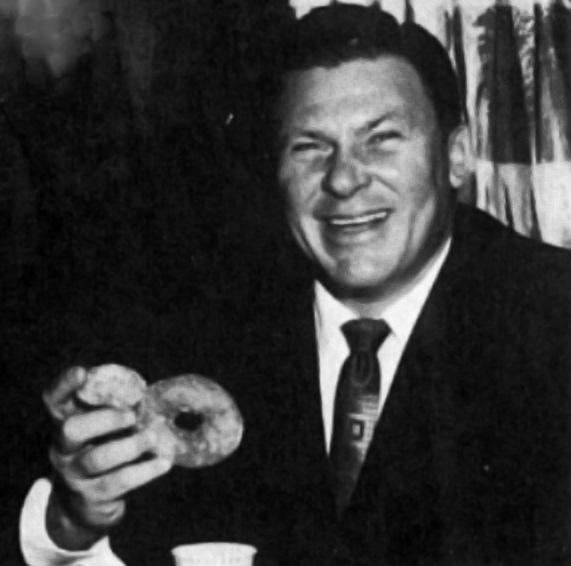
2 minute read
The sweet history of Jews and doughnuts
By Mala Blomquist
A "Donut Lassie" from World War I.
During Hanukkah, doughnuts or sufganiyot are a traditional food to eat. The deep-fried dessert is symbolically prepared to remind us of the miracle of the Hanukkah oil. For as long as most of us can remember, doughnuts have been around.
But have you ever thought of who might have been the first person to drop raw dough in hot oil, making one of the best treats ever?
Archaeologists have turned up fossilized remains of what resemble doughnuts in prehistoric Native American settlements. Ancient Greeks and Romans fried strips of dough in olive oil and then sprinkled or spread them with ingredients to add flavor. Fried dough, either savory or sweet, is found in almost all cultures and cuisines. In the United States, doughnuts can be traced back to the 1700s, with Dutch settlers bringing their olykoeks or
“oily cakes” to New Amsterdam (now New York).
And why the hole? People have long questioned how exactly the hole got in the middle of the doughnut, but the Smithsonian Magazine shares an elaborate story in its archives.
“Fast-forward to the mid-19th century and Elizabeth
Gregory, a New England ship captain’s mother who made a wicked deep-fried dough that cleverly used her son’s spice cargo of nutmeg and cinnamon, along with lemon rind. Some say she made it so son Hanson and his crew could store a pastry on long voyages, one that might help ward off scurvy and colds. In any case, Mrs. Gregory put hazelnuts or walnuts in the center, where the dough might not cook through, and in a literal-minded way she called them doughnuts.
“Her son always claimed credit for putting the hole in the doughnut. Some cynical doughnut historians maintain that Captain Gregory did it to stint on ingredients, others that he thought the hole might make it easier to digest. Still, others say that he gave the doughnut its shape when, needing to keep both hands on the wheel in a storm, he skewered one of his mom’s doughnuts on a spoke of his ship’s wheel. In an interview with the Boston Post at the turn of the century, Captain
Gregory tried to quell such rumors with his recollection of the moment 50 years before: using the top of a round

William Rosenberg










